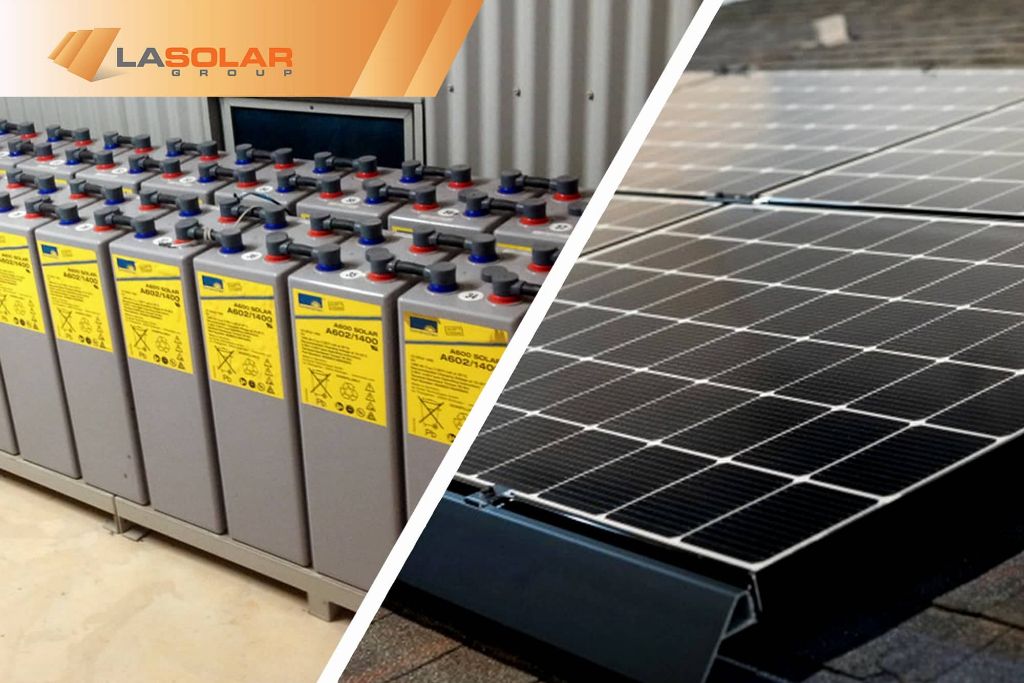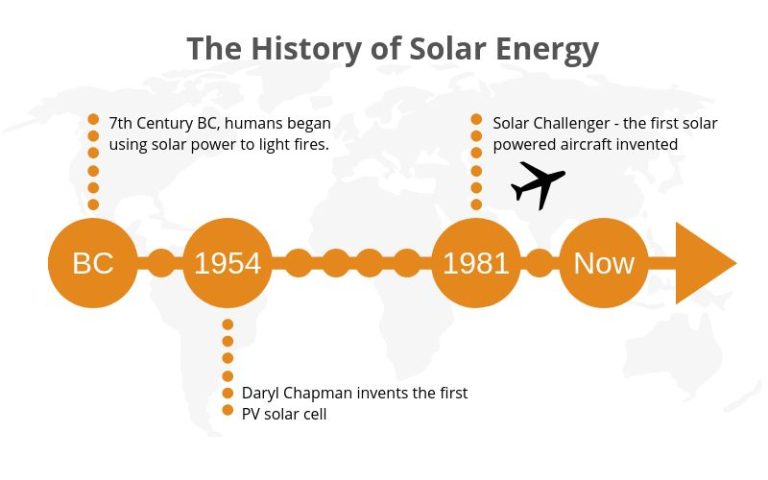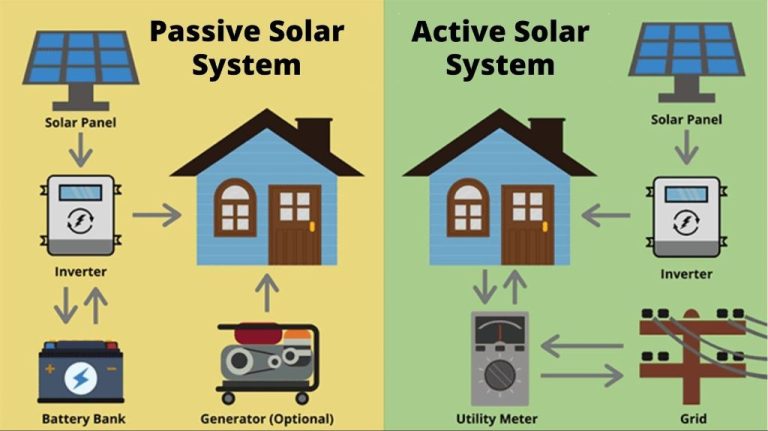Solar Energy For Off-Grid Living: A Comprehensive Overview
Going off-the-grid refers to living independently without connections to public utilities like electricity, gas, sewage, or water. There are many reasons why people make the switch to off-grid living, including reducing environmental impact, increasing self-reliance, and cutting costs associated with public utilities.
Solar power has emerged as a leading renewable energy source for off-grid homes. Solar panels convert sunlight into electricity that can be used to power appliances, lights, and electronics. Excess solar electricity can be stored in batteries for use at night or during cloudy weather. Solar systems can be expanded over time by adding more panels and storage.
With proper planning and setup, solar energy systems can provide 100% of an off-grid home’s electricity needs. Solar offers a clean, renewable power source without monthly electric bills. For people interested in living sustainably off the grid, solar energy is an excellent solution for generating all the power they need.
Evaluating Your Energy Needs
When designing an off-grid solar system, the first step is evaluating your energy needs. This allows you to properly size your solar array, battery bank, and other components. Here are the key factors to consider:
Calculating Daily Energy Use
Make a list of all electric devices and appliances in your home or cabin. For each one, note the wattage and estimated hours of use per day. Multiply the wattage by usage hours to get the watt-hours (Wh) per day. Add up the Wh for all devices to estimate your total daily energy usage.
Determining Peak Power Needs
Pay special attention to large power draws like well pumps, HVAC systems, and electric stoves. The solar array must be sized to handle peak power demand, not just average demand. Add up the wattages of devices likely to run simultaneously to determine your peak power needs.
Estimating Future Energy Needs
Account for future energy needs in your calculations. Are you planning to install an electric vehicle charger? Run wiring for a hot tub? Energy use often grows over time, so size your system accordingly. It’s cheaper to oversize from the start than to expand later.
Solar Panel Options
When designing an off-grid solar system, choosing the right solar panels is crucial. There are a few key factors to consider when selecting solar panels:
Types of Solar Panels
The most common types of solar panels for home use are monocrystalline and polycrystalline silicon panels. Monocrystalline panels are made from a single silicon crystal, making them more efficient but also more expensive. Polycrystalline panels are made from multiple silicon crystals and tend to be cheaper but slightly less efficient.
Thin-film solar panels are lighter and flexible but not as efficient as crystalline silicon options. However, thin-film can be a good choice for curved surfaces like RVs.
Efficiency
Solar panel efficiency indicates what percentage of sunlight is converted to electricity. Monocrystalline panels are typically around 15-22% efficient while polycrystalline fall in the 13-19% range. Higher efficiency means more power output from the same amount of space.
Costs
Monocrystalline panels tend to cost more per watt than polycrystalline. Prices range from around $0.75-1.00 per watt for good quality panels. Higher wattage panels will produce more power but also cost more upfront. Consider both efficiency and costs when selecting panels.
Carefully evaluate your needs and budget. More panels and higher efficiency lead to greater output but higher system costs. Focus on quality panels with proven performance and warranties.
Inverters and Batteries

Inverters and batteries are crucial components of any off-grid solar system. The inverter converts the DC electricity from the solar panels into AC electricity that can power your home appliances and electronics. Meanwhile, batteries store energy for use when the sun isn’t shining.
Inverter Sizing
Choose an inverter that can handle the total wattage of all appliances and devices you plan to run at the same time. Undersizing your inverter means it will overload and shut off when demand exceeds its capacity. Oversizing is inefficient and costly. Do a load calculation to determine your needs.
Battery Options
Lead-acid batteries are the most common for off-grid solar. Options include flooded, gel, and AGM batteries. Lithium-ion batteries are more expensive but higher performance. Nickel-based batteries offer a longer lifespan but lower energy density. Consider your budget, usage needs, and climate when choosing batteries.
Battery Sizing
Make sure your battery bank can store enough energy to meet your usage needs between charges. Factors include power consumption, days without sun, and battery lifespan. Have at least 3 days of autonomy as a safety net. Use a battery sizing calculator to properly size your system’s battery bank.
Charge Controllers
Charge controllers play a critical role in any off-grid solar power system. They regulate the power coming from the solar panels going into the batteries to prevent overcharging. Without a charge controller, batteries can be damaged from overcharging.
The main purpose of a charge controller is to optimize the charging process and ensure the batteries are receiving the proper charging current and voltage levels. This prolongs battery life and ensures optimal system performance.
There are several types of charge controllers available:
- PWM (Pulse-Width Modulation) – These are simple, affordable controllers that turn the charging on and off at a set frequency. They are not as precise as MPPT controllers.
- MPPT (Maximum Power Point Tracking) – More advanced and efficient controllers that maximize energy harvest from solar panels. More expensive but provide better performance.
- Hybrid Controllers – Combines MPPT for solar charging and PWM for wind/hydro charging in one unit.
When selecting a charge controller, it’s important to size it properly to handle the voltage and current from all solar panels. MPPT controllers are recommended for best performance, especially for larger systems.
Wiring and Connections
Properly wiring your off-grid solar system requires an understanding of electrical wiring basics and careful consideration of wire sizing and connector types. Using the right gauge wire is crucial for safety and efficiency.
For wiring your solar panels, recommended wire size is 10 AWG or larger. Smaller 12 or 14 AWG wire can be used for shorter cable runs up to 10 feet. For your battery bank connections, 6 AWG wire or thicker is recommended. Thicker wires allow for less voltage drop over long distances.
Your inverter and charge controller may require thick 4 AWG wires to handle high amp loads. Always consult the product manuals for appropriate wire size. Overcurrent protection with properly rated fuses or breakers is also critical.
For connector types, MC4 connectors are commonly used on solar panels, while large copper lugs or terminal blocks are used for battery banks. Your charge controller and inverter will also include terminal blocks or screw terminals for wiring. Use only copper wiring and avoid aluminum.
Pay close attention to polarity – positive and negative wires must follow the correct conventions. Proper grounding is also essential. Keep wire runs organized and use cable ties or conduit for a clean install.
Following electrical code and the manufacturer’s specifications for all wiring and connections will ensure a safe, reliable, and efficient solar energy system.
Mounting and Placement
The way your solar panels are mounted and oriented can significantly impact system performance. Careful consideration of mounting options and placement is key.
Rooftop vs. Ground Mount
The two main options for mounting solar panels are rooftop and ground mount systems:
-
Rooftop mounts attach panels directly to your roof. This is the most common residential option as it utilizes unused roof space. However, rooftops need to be structurally sound enough to support the additional weight.
-
Ground mounts elevate panels on a rack system in your yard. This allows for optimum tilt and orientation but takes up more physical space. Ground mounts are more common for larger commercial systems.
Orientation and Tilt Angle
For maximum production, solar panels should face true south in the northern hemisphere or true north in the southern hemisphere. However, small deviations from optimal orientation (within 45 degrees) only cause minor energy losses. Tilt angle depends on latitude but is typically set to match your site’s latitude.
Shading
Solar panels are very sensitive to shading, which can significantly reduce system output. Even a small amount of shade on certain cells within a panel can hinder performance. Carefully analyze shading objects like trees or buildings throughout the year and prune/remove as needed. Consider tools like a Solar Pathfinder to gauge sunlight access.
Permits and Codes
Installing an off-grid solar system often requires obtaining permits and following relevant building codes. While requirements vary by location, here are some common considerations:
Local Permitting
Most municipalities require permits for solar installations, especially if connecting to batteries for off-grid use. The permit process ensures your system meets local building, electrical, and fire codes. Check with your local building department to learn about permit needs, costs, and timelines. They can also provide permit applications and inform you of necessary inspections.
Inspectors
Your solar system will likely need inspections by local officials at key points like after initial wiring and final installation. Your inspector will check that all codes are followed, which makes passing inspection important for final approval. Be sure to understand the inspection schedule and have all paperwork ready for each one.
Relevant Codes
There are several codes that may apply to a home off-grid solar system. These include:
- Electrical codes, like the National Electrical Code (NEC), which cover wiring, connections, overcurrent protection, and labeling.
- Building codes that address roof load capacities and structural components involved in solar mounts.
- Fire codes that regulate batteries and electrical systems as potential hazards.
Know your relevant codes, get proper permits, and pass inspections to ensure your system meets all requirements.
Maintenance
Maintaining your off-grid solar system properly is crucial to keep it running efficiently for years to come. Here are some key maintenance tasks you’ll need to perform regularly:
Cleaning Solar Panels
Dust, dirt, bird droppings, pollen, and other debris can build up on your solar panels over time, reducing their energy production. It’s recommended to clean your solar panels at least two times per year. Use a soft brush and mild soap and water to gently clean the panels without scratching them. Avoid using harsh chemicals that could damage the panels.
Checking Electrical Connections
Inspect all wiring connections to make sure they are clean, tight, and corrosion-free. Loose connections can cause dangerous arcing and reduced power output. Check that all conduit fittings are secure and wires are properly routed. Tighten any loose connections and replace any damaged wires.
Battery Maintenance
Follow the maintenance guidelines provided by your battery manufacturer, which may include periodically cleaning battery terminals, checking electrolyte levels, and equalizing charges to extend battery life. Never let batteries fully discharge, and keep them properly ventilated to prevent gas buildup. Replace batteries every 3-5 years or when their capacity drops below 80%.
With proper care and maintenance, your off-grid solar system can provide reliable, renewable power for decades. But don’t neglect regular inspections and upkeep.
Expanding Your System
Once your initial off-grid solar system is set up and running smoothly, you may find that your energy needs increase over time. Fortunately, solar systems are highly scalable and additional capacity can easily be added.
Adding Solar Panels
If your loads exceed your solar array’s output, adding more panels is the simplest way to increase production. Your existing inverter may be able to handle a larger array, but confirm its max input capacity before connecting more panels. Also verify your battery bank and charge controller can handle the extra power.
Increasing Battery Storage
You can add more deep cycle batteries wired in parallel to augment your storage capacity. Use the same type and model for seamless integration. Check that your charge controller and inverter can handle the increased capacity to avoid overloading. Stagger the age of old and new batteries.
Backup Generator
For occasional peak loads a backup generator can provide supplemental power. Size it to handle your largest loads and critical needs during low solar production periods. Consider propane or natural gas units for renewable fuel capability. Integrate with an automatic transfer switch for hands-free operation when needed.
With thoughtful planning, an off-grid solar system can be expanded modularly over time to meet your growing energy needs and keep your home powered sustainably.







